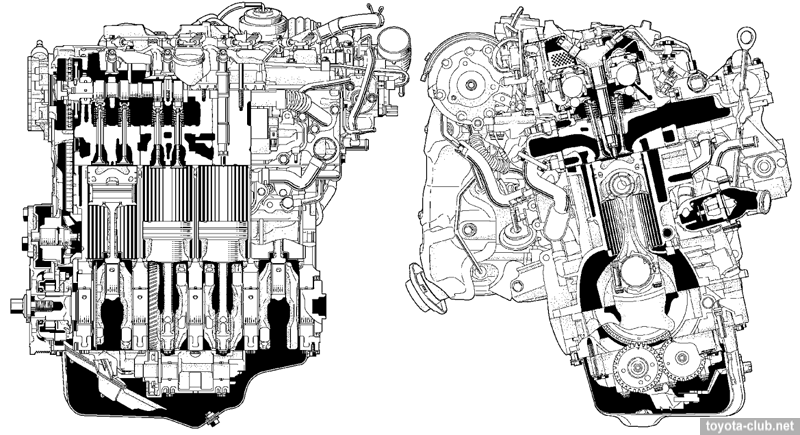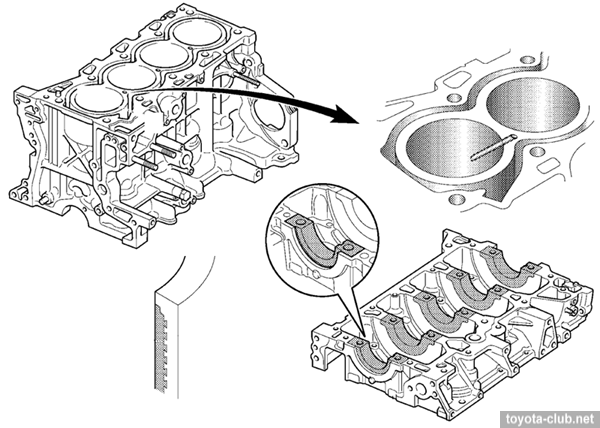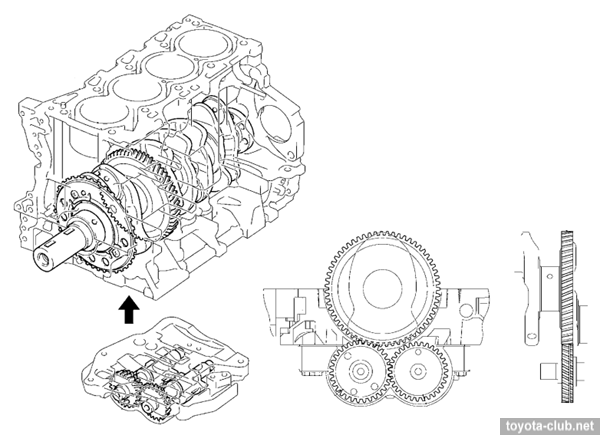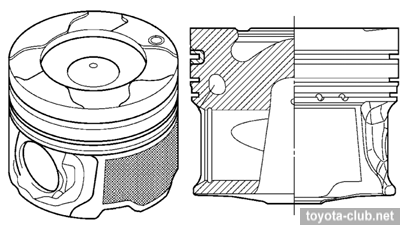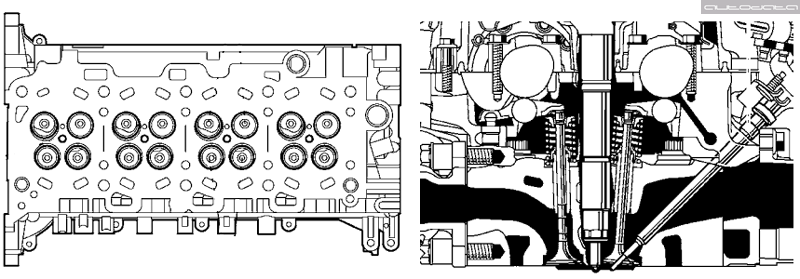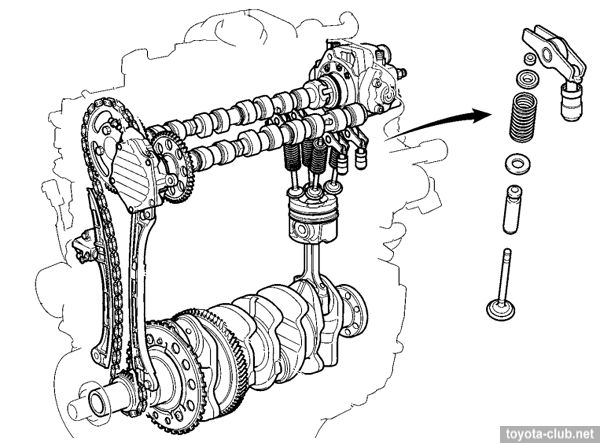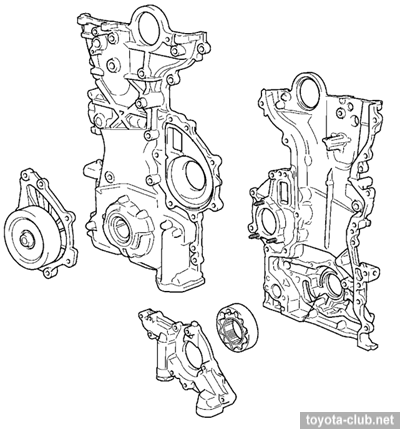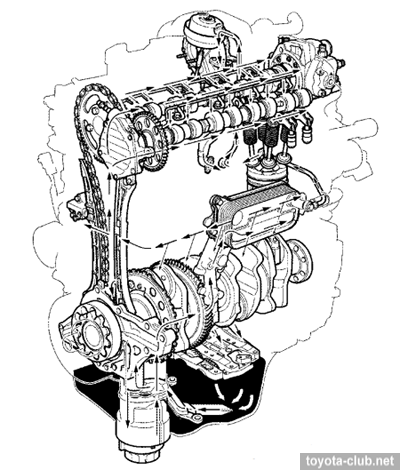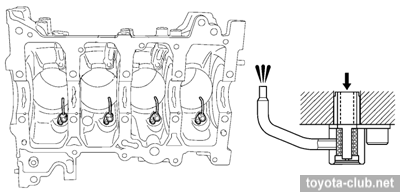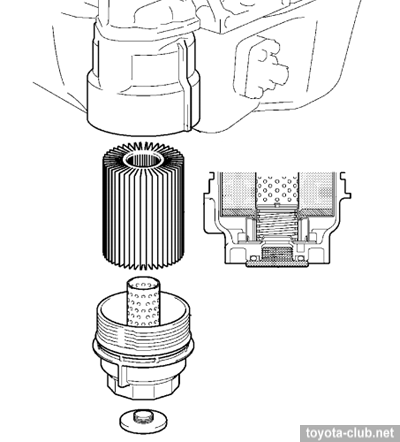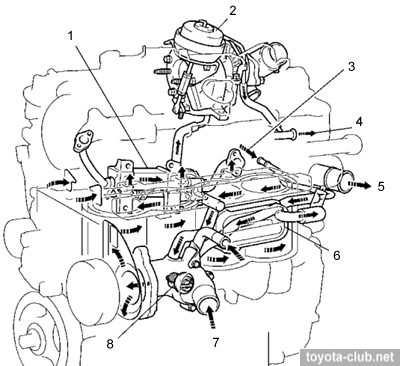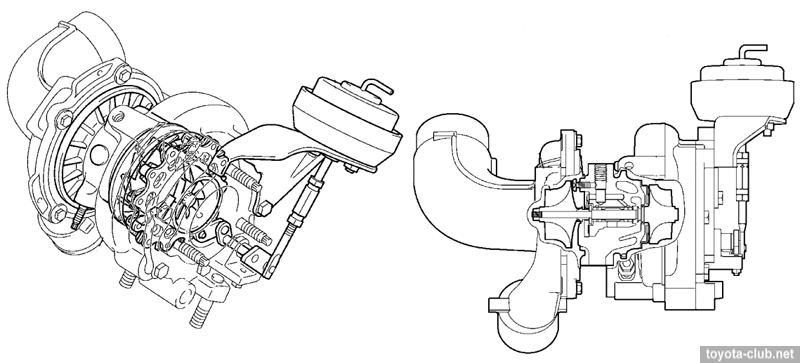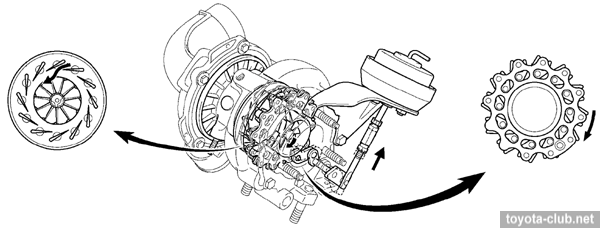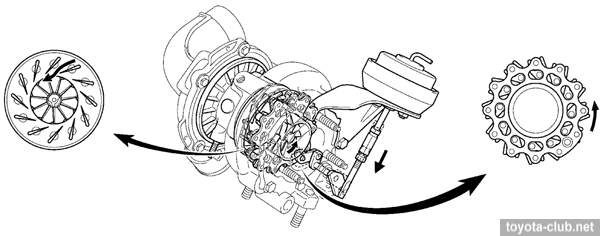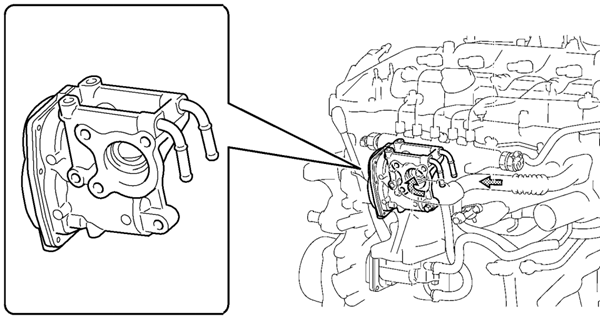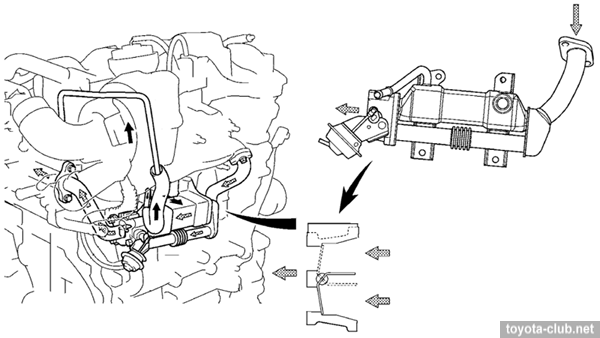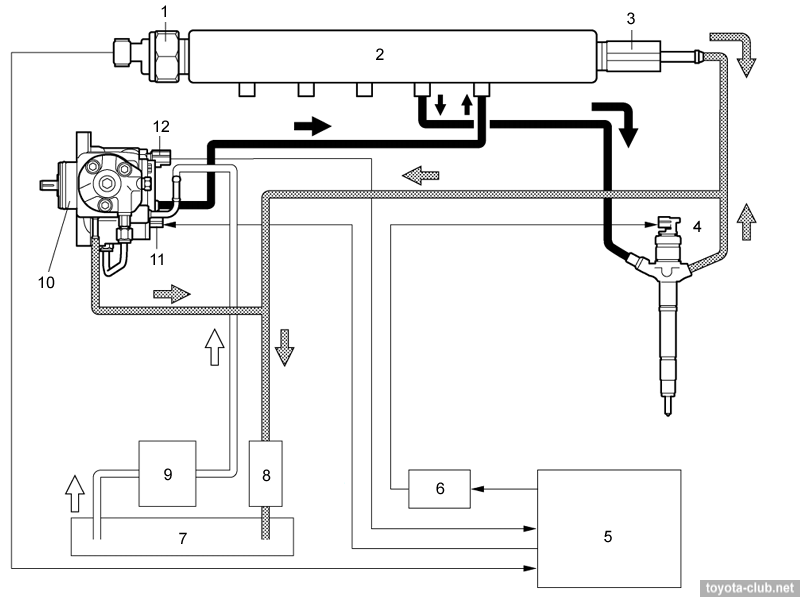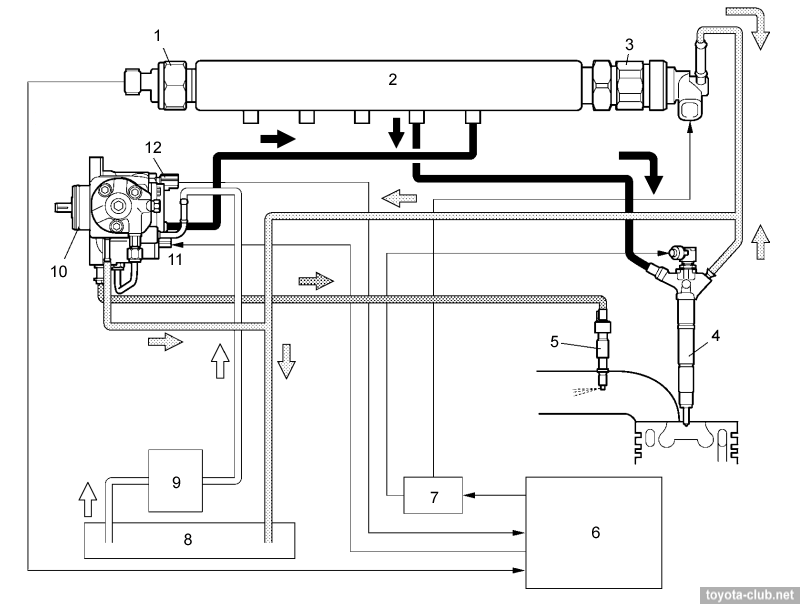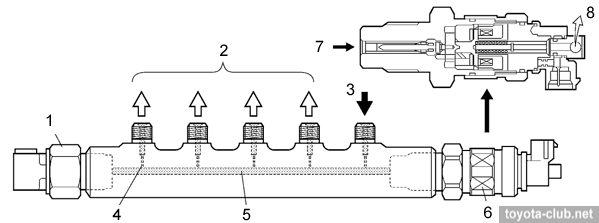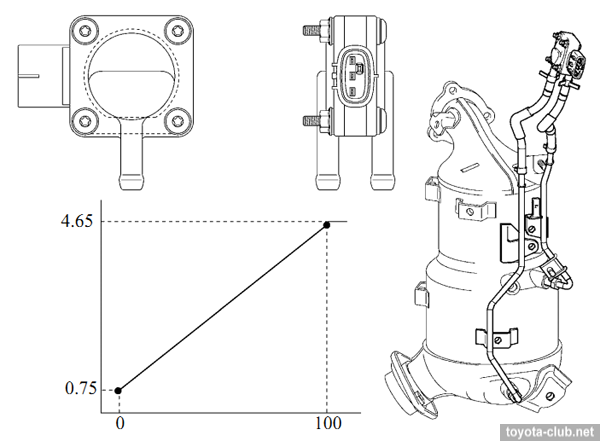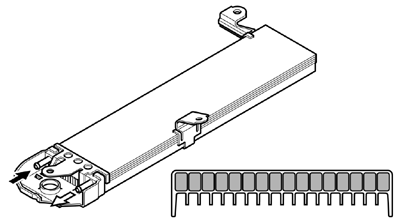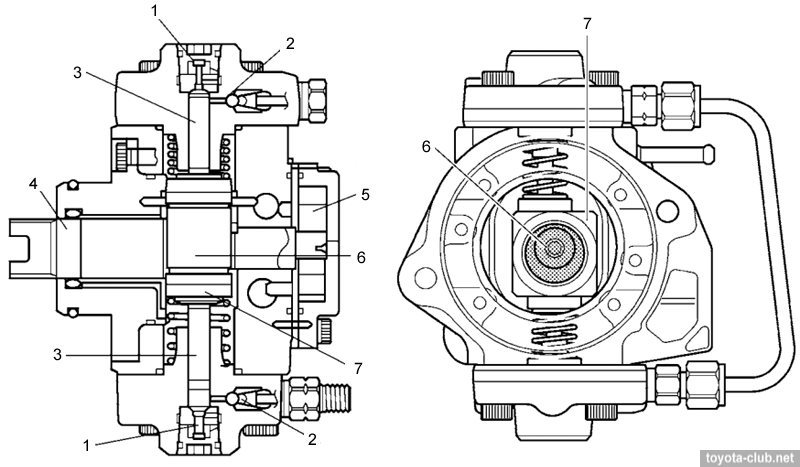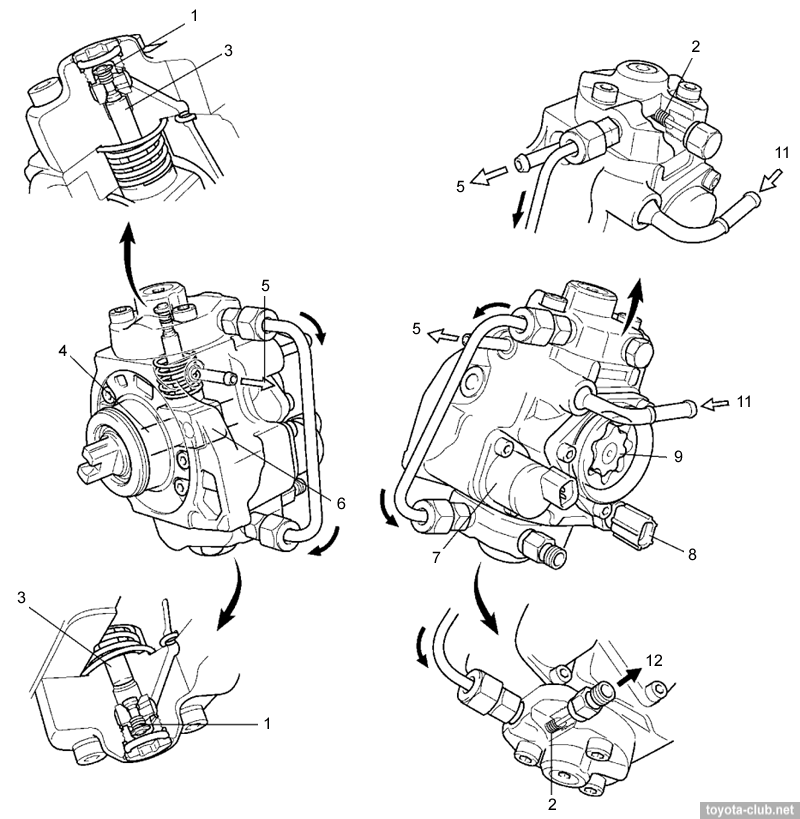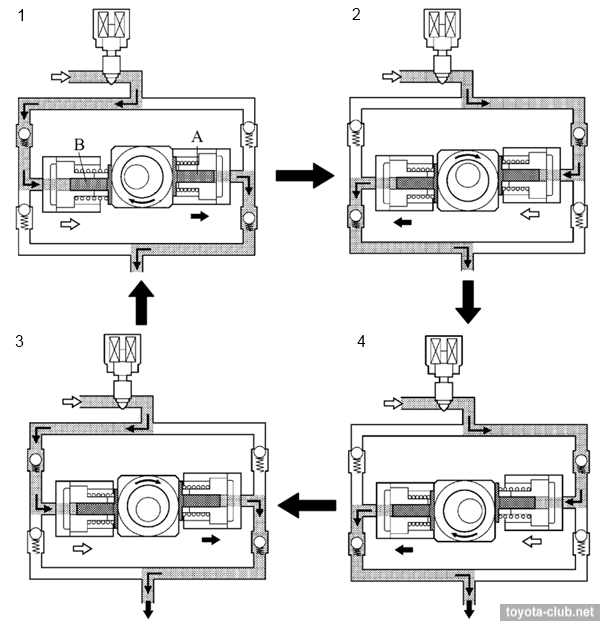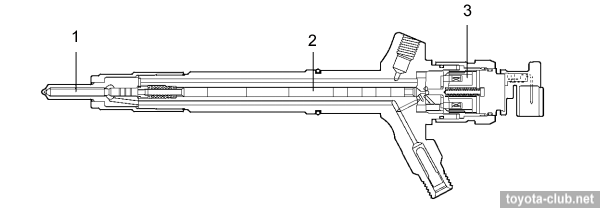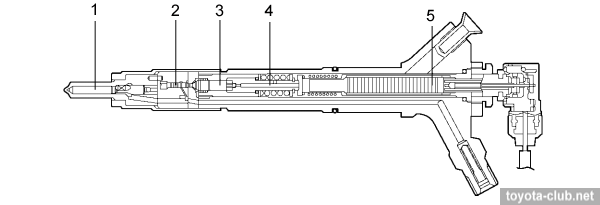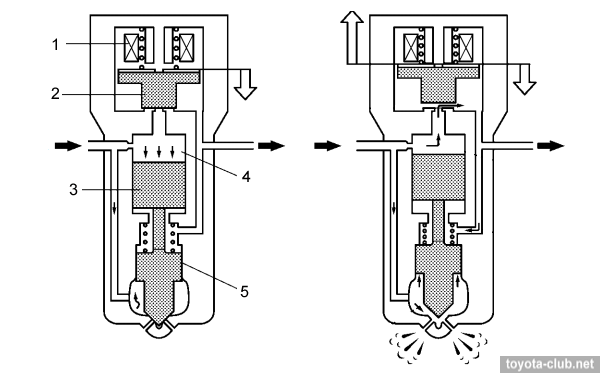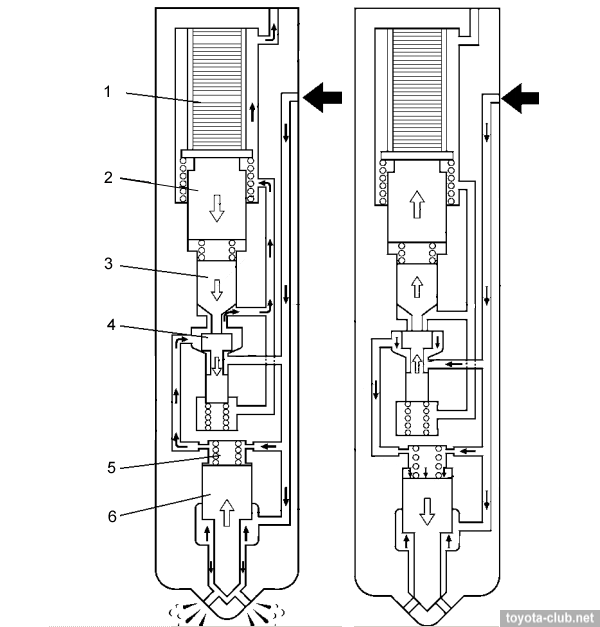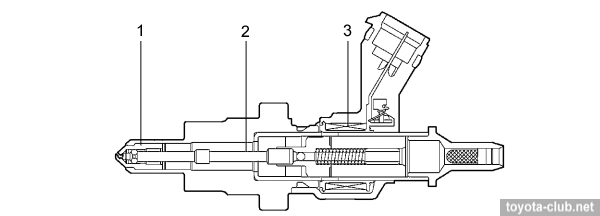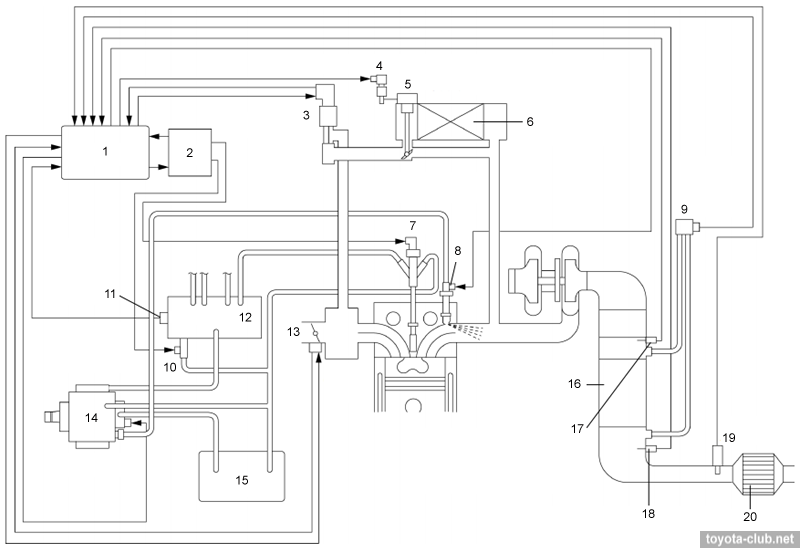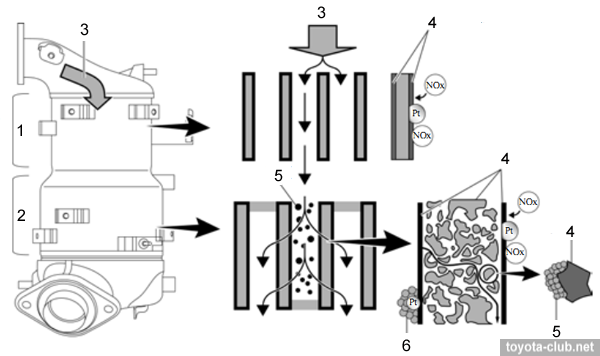|
Eugenio,77
AD series engines were used for C/D-class passenger cars and SUVs for the European market and emergency markets in 2005-2018. Specifications
AD series satisfied the requirements of model range, however performance is not "outstanding" - the main competitors from Hyundai have specific output by at least 10% higher, Koreans also offers more variants with automatic transmissions, and, oddly enough, the more proven reliability. 1AD-FTV (2.0 D-4D). Application: Auris 150..180, Avensis 250..270, Corolla 150, RAV4 40, Verso 20 2AD-FTV (2.2 D-4D). Application: Avensis 250..270, Corolla Verso 10, RAV4 30..40, Lexus IS 200d 2AD-FHV (2.0 D-CAT). Application: Auris 150, Avensis 250..270, Corolla Verso 10, RAV4 30..40, Verso 20, Lexus IS 200d Cylinder block AD series - the second Toyota's experience in manufacturing "disposable" diesel - with aluminium "open deck" cylinder block. Thin-walled iron-cast liners are fused into a alloy block and their special rough outer surface promotes maximum connection and an improved heat dissipation. Of course, no overhaul with reboring provided. Alloy crankcase with fused iron bearing caps for crankshaft main journals attached (similar ZZ series).
2AD engines have gear driven balancing mechanism.
Pistons - aluminium, full-sized, with a combustion chamber in the head. The groove for the upper compression ring have ni-resist insert, there are cooling channel inside the piston head and polymer coating is applied on the skirt. The pistons are connected to the rods with fully floating pins.
Cylinder head Cylinder head made of alloy. Each cylinder has four valves, there is the tip of vertically mounted injector in the center of the combustion chamber and glow plug between the intake ports. EGR channels are inside the head, the exhaust fuel injector is installed in exhaust port of cylinder 4 (with DPF).
Timing drive Valve Mechanism - DOHC 16V: double camshafts in the head and four valves per cylinder. The exhaust camshaft driven by roller chain (pitch 9.525 mm), inlet - by gear from the exhaust. Chain tensioned by hydraulic tensioner with ratchet mechanism. Vacuum pump is driven by front side of intake camshaft and fuel supply pump by exhaust camshaft rear side. There are valve adjusters and roller rockers in the valve mechanism.
The water pump and oil pump are installed in cast timing chain cover.
Lubrication system Trochoid oil pump in chain cover is driven directly by the crankshaft. As usual for turbo diesel, engines are equipped with water oil coolers.
Oil nozzles that lubricate and cool the pistons are provided.
The oil filter is mounted under the engine vertically. Used the collapsible filter with replaceable cartridges.
Cooling system Cooling system is classic: pump drive by outer side of serpentine belt, "cold" (80-84°C) mechanical thermostat, staged radiator fan control. In addition to the usual components, there is a water cooling for turbocharger (-FHV) and EGR cooler.
Turbocharger AD engine uses turbocharger with variable nozzle (VGT) of 1st generation (vacuum actuator). Advantages - the maintenance of optimum boost pressure over a wide rev range, lowering back pressure at high speed, increased output at low speeds, no need for the bypass. Turbocharger cooling at -FTV by the motor oil only, at -FHV by water also.
- At low load and low engine speed actuator moves the control ring and turns pivotally connected vanes to partially closed position. This increases the speed of gas entering the turbine, increases the boost pressure and increases engine torque.
- At high load and high speed vanes are moved to the open position, allowing maintain the desired boost pressure and reduce resistance at exhaust.
Intake and exhaust To cool the charge air car is equipped with intercooler. There is throttle in the intake (in earlier versions - rotary solenoid type, in the later - DC motor). It is used during EGR operation, during DPF regeneration and to for smoother engine stop. EGR (exhaust gas recirculation) bypass a part of exhaust gases to the intake to reduce the maximum temperature in the cylinder and reduce the nitrogen oxides emissions. EGR valve drive - at the early versions by solenoid with spool valve and a feedback position sensor, at the later - with DC motor and non-contact position sensor (Hall effect).
To avoid excessive cooling of exhaust gases at low load, EGR cooler valve send gas flow bypass the radiator (with DPF).
There are three variants of emission control system: - CCO (DOC) - with oxidation catalyst, matching Euro-4. CCO function - oxidation of hydrocarbons (HC) and carbon monoxide (CO) to water (H2O) and carbon dioxide (CO2). - CCO + DPF - with oxidation catalyst and a diesel particulate filter, matching Euro-4/5. DPF function - accumulation and combustion of soot particles. Also additional exhaust fuel injector used. - D-CAT - with the oxidation catalyst, NOx catalyst and particulate filter, matching Euro-4/5. Fuel system / Engine control Common Rail type fuel system - the fuel is supplied by high pressure pump in a common rail and then is injected into the cylinders via the electronically controlled injectors. One of the main differences from the old diesel engines - the high pressure, instead of ~20 MPa there is the pressure of 25-167 MPa (1AD-FTV), 25-180 (2AD-FTV), 35-200 MPa (2AD-FHV). The components made by Denso.
Injection at -FTV with solenoid injectors performs up to three times per cycle: pilot (before TDC of the compression stroke), basic (at TDC of the compression stroke and beginning of the expansion stroke), after (late injection on the expansion stroke); at -FHV with piezoelectric injectors - up to 4 times per cycle: pilot injection is divided in two stages. There are fuel pressure sensor and pressure discharge valve in the fuel rail - mechanical (-FTV) or electronically controlled (-FHV). Sensor and valve are "disposable", are not to be dismantled, and mechanical pressure limiter adjustment is performed once at the factory (opens at a pressure of 211 MPa). Electronically controlled valve opens and closes by a signal from the injector driver, moreover, it can function as emergency pressure relief. The small channels in the rail act as orifice and damp the fuel pressure pulsations.
Fuel pressure control at -FTV carried out by injection pump control valve only (SCV - Suction Control Valve), and at -FHV more precise control carried out by supply pump control valve and by pressure discharge valve. There are following sensors in the system: - air flow sensor (MAF) / air temperature sensor - crankshaft position and camshaft position - inductive type - accelerator position (Hall effect, dual-channel) - throttle position (Hall effect) - fuel pressure - a two-channel (for -FHV), mounted in the rail Engine with D-CAT also equipped with: - exhaust temperature sensor - thermistor type, before and after DPNR converter - air-fuel ratio sensor (AFS) - after DPNR converter - differential pressure sensor - measures the pressure drop at DPNR converter, allowing to determine the amount of soot accumulated
The function of engine oil condition monitoring provided. By default (in ideal conditions), the oil change indicator light switch on every 30.000 km. However, the control unit calculates the theoretical condition of the oil on the basis of driving conditions for the mileage since last replacement and switch on the light early. It is decided that the oil gets dirty during enriched mixture operation and strongly polluted when durable operation with late injection timing. Note, AD lack some elements of European-brends diesel engines - for example, electrical heating of the fuel filter and fuel pre-heating function - when after starting supply pump running at peak performance, and warmed while pressurizing fuel through the pressure relief valve goes into the tank. Japanese sometimes acted contrary - to cool the fuel heated at the pump, there is a special heat exchanger in the return line (early 2AD-FTV).
Fuel system / Supply pump High pressure supply pump - HP3 type, consists of the eccentric shaft, ring cam, a pair of plungers, four check valves, fuel temperature sensor, lift pump and control valve (SCV).
Moving by rotating eccentric shaft, the ring cam pushes one of the plungers outward and pumps fuel into the rail, while the spring pushes the other plunger inward and fuel draws into the supply pump chamber.
Fuel system / Injectors AD series is equipped with two types of injectors - solenoid and piezoelectric (initially set at -FHV, but with Euro-5 appeared on -FTV). Piezoelectric injector has much higher operation speed, thereby increasing the accuracy of control and it is possible to carry out the injection more times per cycle. Specific injector data (model code, the individual feed correction) printed as QR code and be sure to be programmed in the control unit.
Solenoid injector operation: - When closed, the valve is held by a spring, and the fuel pressure in the control chamber holds the piston in the bottom position, which in turn locks the needle in the closed position (the fuel pressure acting on the bottom of the needle is not enough to open it). - When the current supply to the coil, the valve opens the channel, through which fuel flows to the bottom of the piston. This reduces the pressure in the control chamber and the pressure increases below the piston, whereby piston moves up. Simultaneously the needle opens and fuel injection occurs. - After current cut-off valve is closed by the spring. At this point, the pressure in the control chamber increases, the piston moves down, the needle closes and injection is terminated.
Piezoelectric injector operation: - When voltage is applied to the piezoelectric element its linear dimension changes, pistons and valve move downward. Overlapped by top of the valve drain channel from control chamber opens. Pressure in the control chamber drops. The needle moves up and fuel injection occurs. - After current cut-off the pistons and valve returns by springs. Drain channel is closed. The pressure in the control chamber increases. The needle moves down and fuel injection stops. - At idling control unit lowers the voltage applied and reduce injector operation speed. This helps to reduce noise.
DPF models are equipped with additional injector which is supplied directly from the pump in catalyst regeneration mode.
D-CAT High performance 2AD-FHV is equipped with a D-CAT (Diesel-Clean Advanced Technology) system for the neutralization not only carbon monoxide, hydrocarbons and soot particles, but nitrogen oxides also.
As is known, during fuel (HC, S) combustion in presence of air (O2, N2, H2O) exhaust gases produced, consisting on ~ 97% of the harmless components (O2, N2, H2O, CO2) and ~ 3% of harmful (CO, CH, SO2, NOx) and soot (PM - microscopic particles with a core of carbon and adsorbed thereon hydrocarbons, metal oxides, and sulphur). - There are NSR converter (NOx Storage Reduction to neutralize NOx + CH + CO) and DPNR converter (Diesel Particulate-NOx Reduction to neutralize PM + NOx + CH + CO) installed in the exhaust system, and oxidation catalyst built in silencer.
D-CAT operation stages: 1) Nitrogen oxides accumulation. Under normal conditions, the engine running at some lean mixture, that causes increased NOx emission. Nitric oxide is reacted with the exhaust gas oxygen (O2), and reaction products are accumulated in catalyst adsorbing material as nitrates (NO2). Evolved free oxygen (O) together with the excess oxygen in the gases are involved in the process of passive regeneration by oxidizing the soot particles to carbon dioxide (CO2). Simultaneously with the accumulation of nitrogen oxides, catalyst also absorbs the sulphur which takes the useful volume of the absorbent layer. 2) Nitrogen oxides removal. The control unit calculates the theoretical accumulated volume of NOx on the basis of fuel consumption, air flow and exhaust gas temperature, and if necessary enriched mixture by main injectors and the exhaust fuel injector. The content of CO and CH in the exhaust gases significantly increases, and in the DPNR converter a large amount of NO and free oxygen escape. NO involving HC and CO in the presence of platinum is reduced to N2. Simultaneously, a large quantity of active oxygen generated in the converter, enhances oxidation of soot to CO2. 3) Soot removal. Passive regeneration can be performed by itself under the condition of exhaust gases high temperature (in the presence of platinum - NOx + O2 ⇒ NO2, NO2 + C ⇒ NO + CO, CO + NO + NO2 + O2 ⇒ CO2). However, over time the amount of soot in the filter is increased and its capacity is reduced which requires active regeneration. The control unit determines clogging of the filter by analysis of driving conditions and the differential pressure sensor data and activates main injectors and the exhaust fuel injector. The filter material temperature increases and soot particles burn out (C + O2 ⇒ CO2). 4) Sulphur removal. Desulphurization of converter is much harder than removal of nitrogen oxides, since they are more resistant to high temperatures. The control unit calculates the theoretical sulphur content of the converter on the basis of total data volume injection and optionally enriching the mixture by operating all injectors. The process requires a rather long time and specific traffic conditions to increase catalyst converter and oxide sulphur to carbon dioxide (SO2).
First, once again focus on the modern diesel engines features. The sense of the new diesel cars buying in Europe is clear: - significantly higher price of the diesel version and increased maintenance costs at high annual mileage overlapped by low fuel consumption, - there are no problems with the quality of diesel fuel, and its price is even lower than the price of gasoline, - there are no problems with low temperatures, - all potential technical problems within 5 years closed by warranty, - for medium segment cars the performance of diesel versions is radically better those of gasoline versions. The buying of cars with modern diesel engines (especially "second hand") in the former soviet union territories largely dictated by a false understanding of the economy: - a substantial part of the initial safety margin of the car as a whole and in particular the engine has already been spent by the first owner - especially in case of traditionally high-mileage diesel cars; - any faults are only the owner difficulties in the absence of a competent service, so perhaps the most popular local method of new diesel engines "repair" - the resale the car, preferably in a far wild east region; - despite that low fuel consumption results in significant economy for high annual mileage, the cost of repair of modern diesel engines overlaps any such savings and is totally inadequate in comparison with the price of used cars. For example, the price of new original components for AD series: rail - $900, injector (each) - $1000-1200, pump - $3000. From an customer points of view Toyota's diesel range has major drawback - the only AD with automatic transmission is low-performance 150 ps version, but some models in principle unavailable with diesel and automatic transmission.
In 2015, Toyota removed AD series from the European market and replaced them with BMW diesel engines received in the partnership program (Toyota designation - WW series), and a few years later finished AD production worldwide. There will be no next generation of Toyota medium diesel - their market is completely given to hybrid powertrains. Toyota engines review |
|

